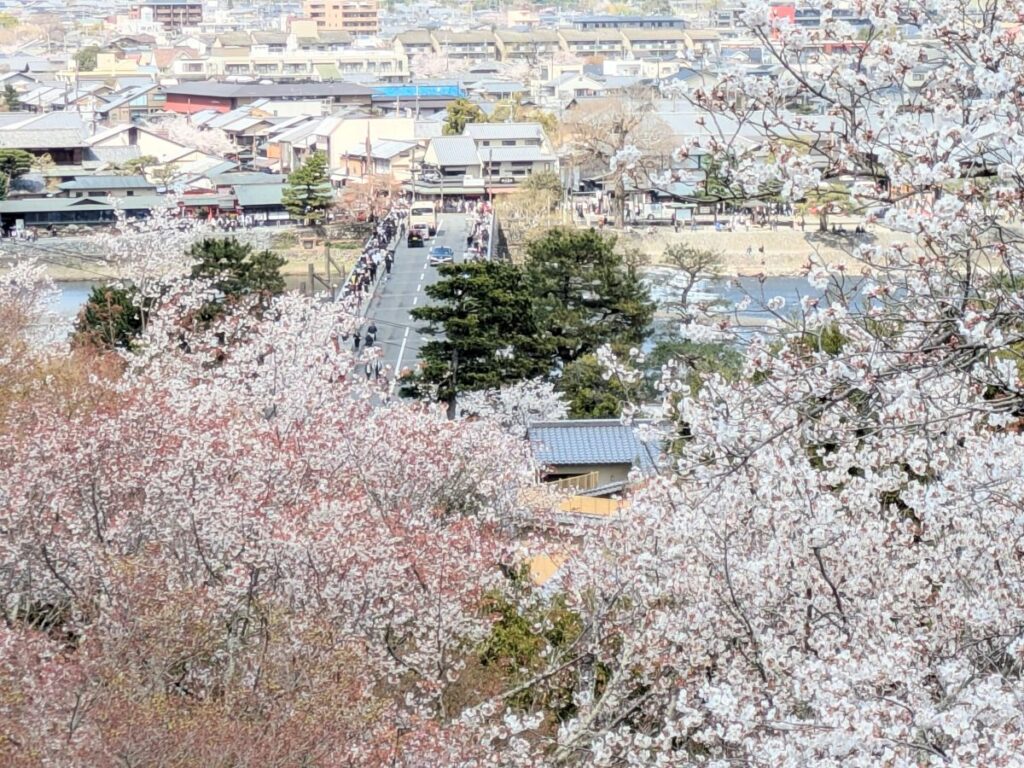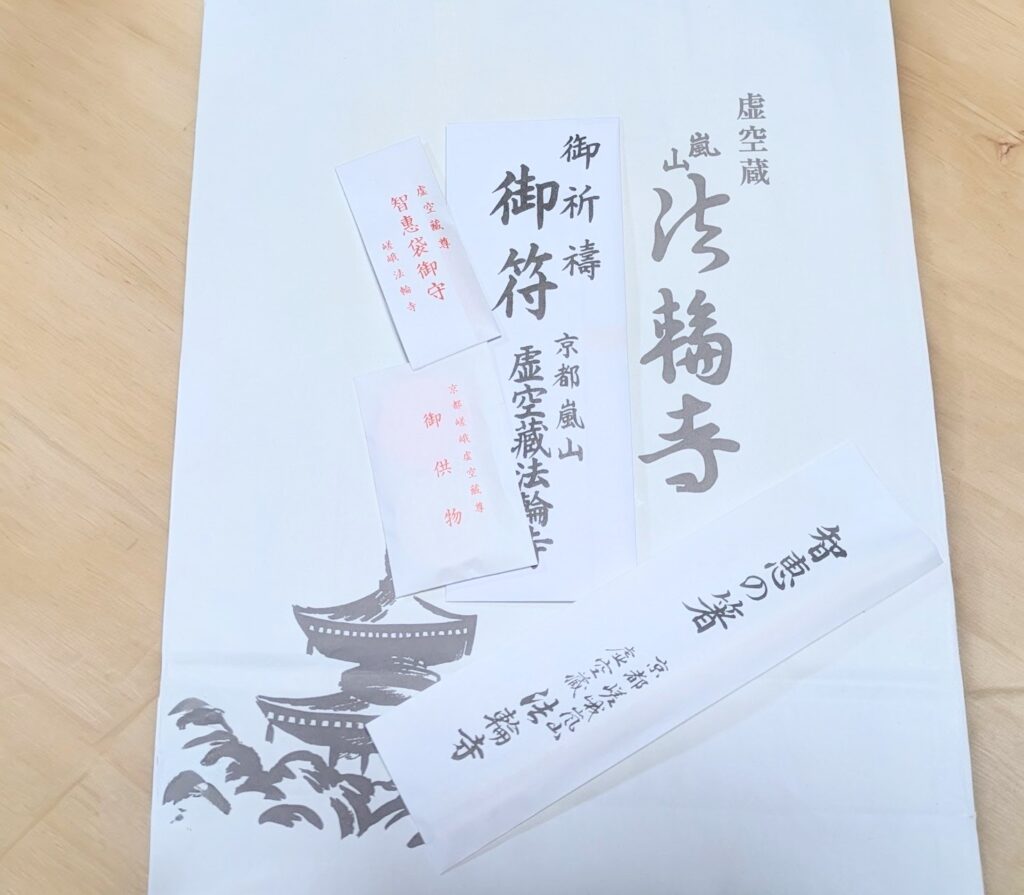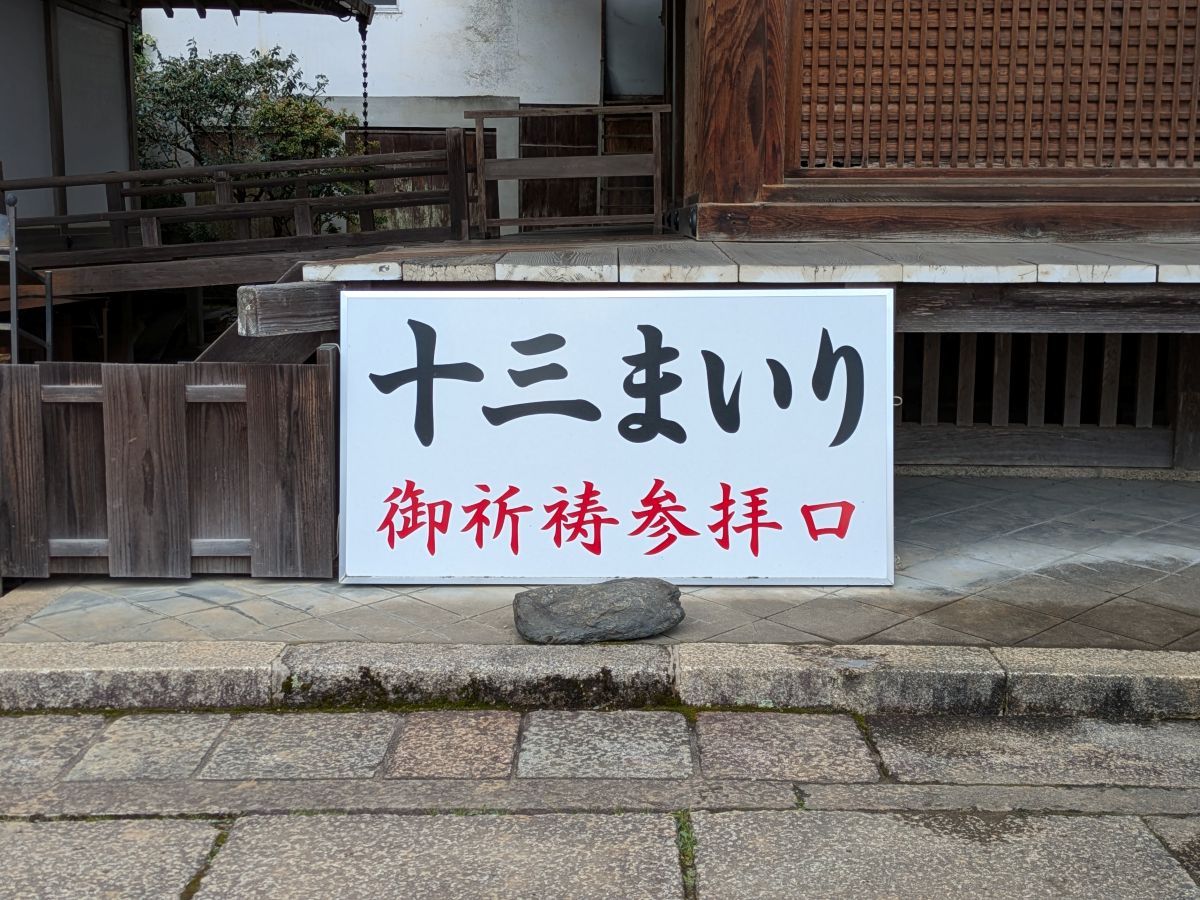
In spring, you can see children in kimono or suits.
They walk through Arashiyama.
Their destination is Kokuzo Horinji Temple.
There, a tradition called ‘Jusan Mairi’ takes place.
It celebrates turning 13 by traditional counting system.
Children pray to gain wisdom from the bodhisattva.
This custom feels uniquely Kyoto.
This spring, I went with my son for his Jusan Mairi.
I’ll share our experience and explain the meaning.
Is it really a Kyoto-only tradition?
And what’s the story behind the bridge you mustn’t look back on?
What Is Jusan Mairi?
Jusan Mairi is for children age 13.
It is by traditional count.
They visit a temple to pray for wisdom and blessings.
The event is held around April 13 each year.
Children pray to Kokuzo Bosatsu, a wisdom deity.
The origin dates back to the Heian period.
When Emperor Seiwa turned 13, he held a ritual.
It took place at Kokuzo Horinji in Arashiyama.
In that time, turning 13 meant becoming an adult.
It was seen as a rite of passage into adulthood.
When Do You Go for Jusan Mairi?
Traditionally, it’s done at age 13.
But, now many go after graduating elementary school.
The most popular time is spring break in March or April.
Horinji Temple accepts visits all year round.
But the main seasons are spring and autumn.
Spring: March 13 to May 13.
Autumn: October to November.
What to Wear for Jusan Mairi?
Traditionally, kimono is worn.
But, In modern time, many children wear suits, dresses, or school uniforms.
I also dressed my son in suit.
The suit is the same he wore to graduation.
There are no strict dress rules anymore.
The Process of Jusan Mairi

1. First, Reception:
First, Sign in and pay the prayer fee.
Horinji offers 1-week: ¥5,000, 1-month: ¥7,000, 1-year: ¥13,000.
※It’s a good idea to check in advance. Because Prayer fees vary depending on the temple.
※The duration listed refers to the period during which
the temple will offer prayers on your behalf,
using the kanji character you wrote in Step 2 as a symbolic substitute for your name.
2.Next, Write a Kanji:
Next, The child writes a single kanji character that represents his or her feelings.
This is based on Buddhist tradition of sutra writing.
3. Prayer:
And, You will be called in the order of registration.
Each family enters the main hall when their name is called.
Then, you will receive the prayer ceremony.
Of course, taking photos inside the main hall is strictly prohibited!
4. Finally, receive Gifts:
Finally, receive a charm and a sacred paper talisman.
The child should keep the charm for one year.
Ideally, they should visit the following year to return it.

Among the items you receive is a special pair of “Wisdom Chopsticks.”
It is said that your first meal after the prayer should be eaten using them.
In our case, the ceremony was in the afternoon,
so we used the chopsticks for that evening’s dinner.
After the prayer, you cross Togetsukyo Bridge without looking back.
But why is it that you must not look back?
The reason… will be revealed later.
Is Jusan Mairi Only in Kyoto?
Jusan Mairi is often seen as a Kyoto custom.
That’s because Horinji Temple is very famous.
But it also exists in other parts of Japan.
Temples that worship Kokuzo Bosatsu may hold it.
Still, it’s not as common as Shichi-Go-San.
So many people think it’s unique to Kyoto.
Don’t Look Back on Togetsukyo Bridge?
After the visit, children cross Togetsukyo Bridge.
They must not look back until they cross it.
If they do, wisdom may be lost, says the belief.
Parents tell their kids, “Don’t turn around!”
Some even tease them to test their willpower.
Meanwhile, Arashiyama in spring is in the midst of the tourist season!
Tourists from home and abroad are walking on the bridge.
They are lively and cheerful manner.
In contrast, children nervously, quietly and silently cross the bridge.
The tourist seem to wonder,
“What’s going on?” and look at the child curiously.
But the children walk on, full of quiet focus.
Jusan Mairi is One Step into Adulthood
Jusan Mairi is a beautiful coming-of-age tradition.
It celebrates growth, wisdom, and family bonds.
In Kyoto, it becomes a precious spring memory.
If you visit in spring, you might see it too.
Jusan Mairi is just one of many traditional events held in Kyoto throughout the year.
To learn more about seasonal customs and cultural experiences?
Check our Living in Kyoto section!



コメント